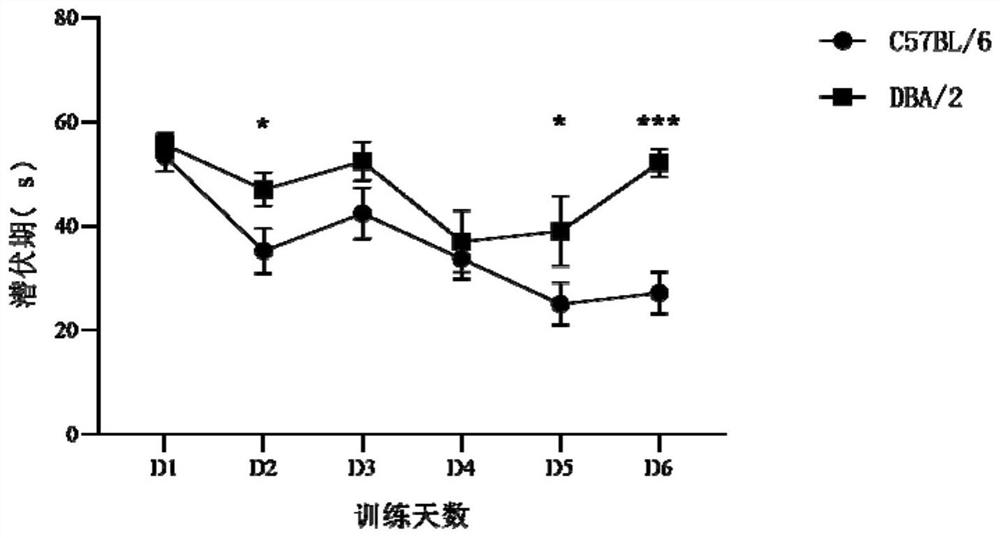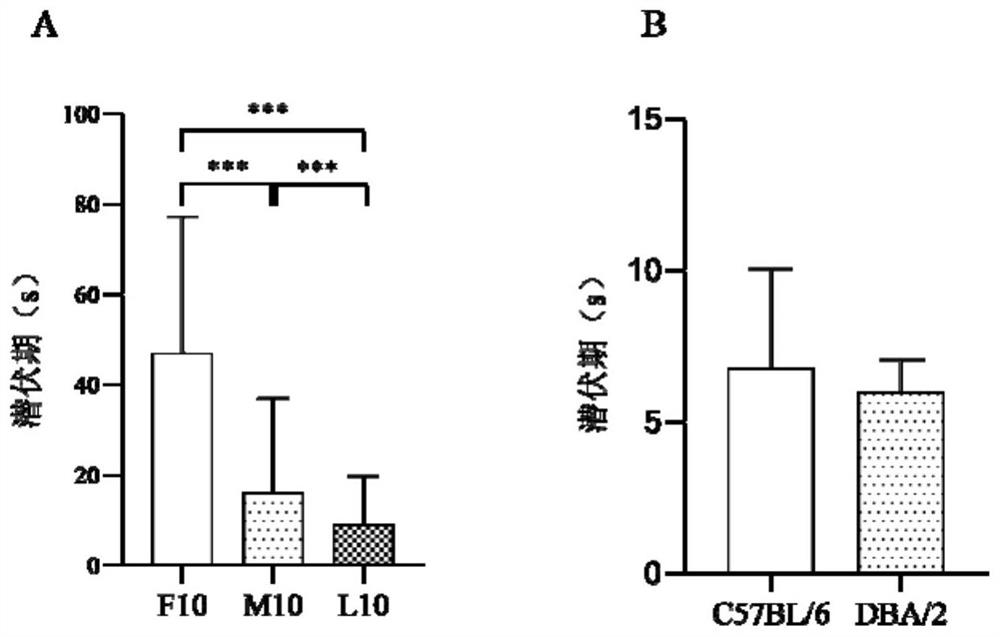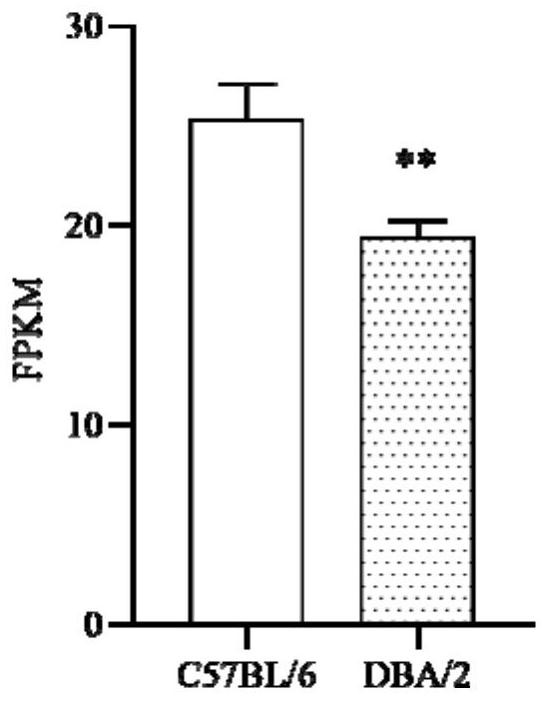Method for training and improving space learning ability of mice
A technology of learning ability, mice, applied in the direction of application, animal taming device, animal husbandry, etc.
- Summary
- Abstract
- Description
- Claims
- Application Information
AI Technical Summary
Problems solved by technology
Method used
Image
Examples
Embodiment 1
[0022] Through the following experiments, the present invention proves the correlation between the invented Nr1d1 gene and water maze training to improve the spatial learning ability of mice.
[0023] 1) Differences in spatial learning ability between DBA / 2 mice and C57BL / 6 mice
[0024] The experimental animals used were 20 8-week-old DBA / 2 mice and 20 C57BL / 6 mice each, male, and they were adaptively fed for 7 days, and then 10 DBA / 2 mice and 10 C57BL / 6 mice were selected for a period of 6 days. The Morris water maze navigation test, once a day, recorded the latency of each mouse (the time required to successfully board the platform for the first time after entering the water), and the comparison between the latency of DBA / 2 mice and C57BL / 6 mice The independent sample t test was used for analysis, and when p < 0.05, the difference was considered to be statistically significant.
[0025] Another 10 DBA / 2 mice and 10 C57BL / 6 mice were taken. After the adaptive feeding, the C...
PUM
 Login to View More
Login to View More Abstract
Description
Claims
Application Information
 Login to View More
Login to View More - R&D
- Intellectual Property
- Life Sciences
- Materials
- Tech Scout
- Unparalleled Data Quality
- Higher Quality Content
- 60% Fewer Hallucinations
Browse by: Latest US Patents, China's latest patents, Technical Efficacy Thesaurus, Application Domain, Technology Topic, Popular Technical Reports.
© 2025 PatSnap. All rights reserved.Legal|Privacy policy|Modern Slavery Act Transparency Statement|Sitemap|About US| Contact US: help@patsnap.com



